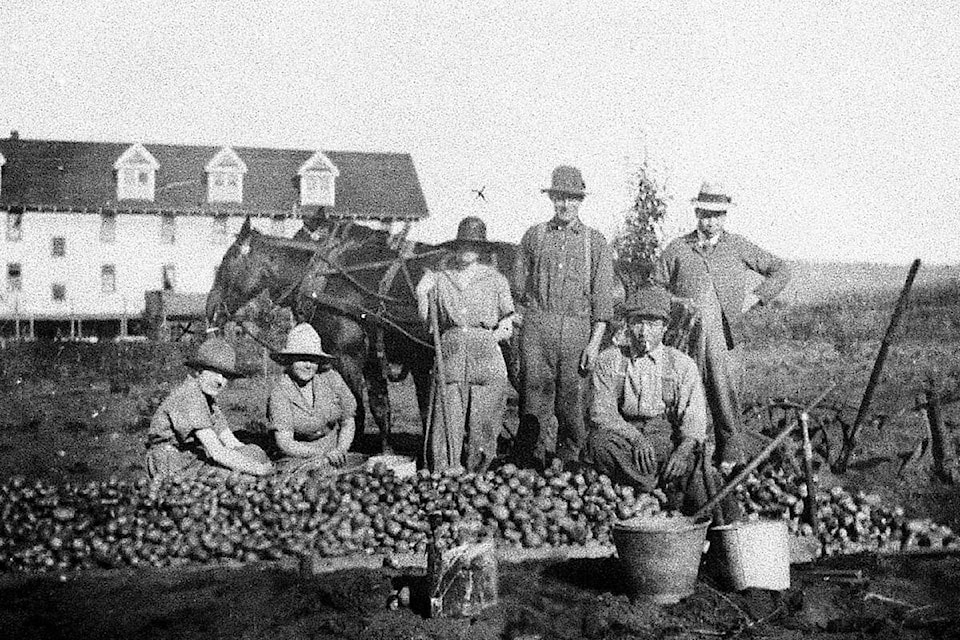By the staff at the Museum at Campbell River
The changing colours of the foliage, the shorter days and that final harvest from the garden are all hallmarks of fall. As winter approaches it is an excellent time to look back at how residents of this area prepared for the coming season.
Indigenous people were well versed in the harvest and preservation of the edible plants and wildlife that thrived in this moderate climate. The yearly rhythm of their lives linked to gathering and preserving foods for the months ahead. With the arrival of the settlers came the introduction of other crops and preservation methods. What emerged was a melding of indigenous and European knowledge.
In one of the many recorded interviews housed at the Museum Liǧʷiɫdax̌ʷ Elder Ruby Wilson recalls the extent of her grandparents’ garden.
“I remember their garden, in Salmon River, it was so bountiful. I guess because it was by the river, it had a lot of water for the fruit. She had beautiful fruits, her carrots were big and fat, and she had red and yellow currants and they were always tasty, cherries… She had a big farm that both her and my grandfather tended. I used to go with my grandfather to Sacht’s store, he would go up there to buy groceries, or to sell fish to the farmers, or trade or whatever they had, both salmon and halibut.”
At that time, everyone’s diet was a mix of goods from the local store and what could be harvested and preserved.
Pansy Eddington, the eldest daughter of August and Zaida Schnarr, recalls the quantities and types of staples they would purchase to augment their diet.
“When we bought flour it was by the 100 pounds…. big 25 lb cans of peanut butter…50 pounds bag of rolled oats, and a case of canned Pacific Milk, that was what we were raised on, we never went hungry.”
In later years, after the death of her mother, Pansy and her two sisters would spend their summers at the family homestead up Bute Inlet picking and canning berries.
Bill Henderson, son of Sam and Mae Henderson, also remembers the yearly ritual of picking berries to add to the Henderson family table.
“When we went picking berries, that was a big thing – blackberries, saskatoons. My mom used to hang little cans around our necks and away we’d go. When we’d fill that up, we’d dump it in a bigger one. She’d make lunches and we’d spend the whole day picking berries. Next day she would be making jam, all day. We had a jam shed. It was huge.”
Today, for most of us, securing food means a trip to the grocery store or favourite restaurant. We live in an age where many don’t really think much about where the food we eat comes from. However, things are shifting due to concerns around food security and the 100-mile diet movement.
There is a growing recognition that people can connect with the environment through food. Whether planting your own crop or harvesting native edibles, this act enables us to physically connect with nature, the growing cycle and environment.
As this shift accelerates there is much that we can be learned from our past from the prime conditions for that excellent wild berry patch to the crops that thrive in our climate. We appear to have come full circle and to move forward it will require a look back.
